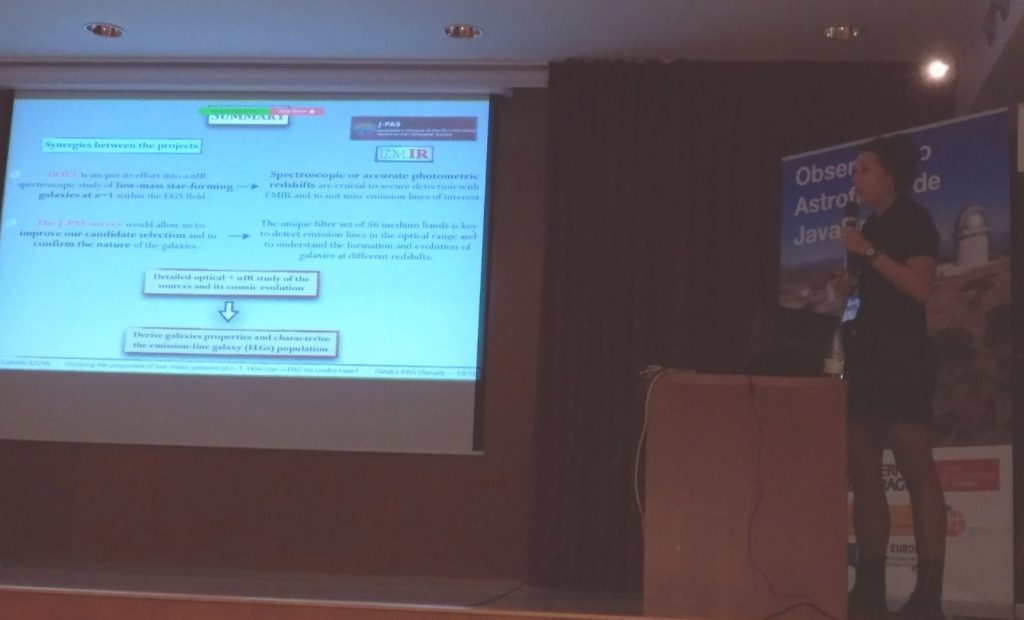GUAIX member Cristina Cabello attended the J-PAS RIA Workshop: ‘The Universe in 56 colours: science with the first J-PAS data’ held in Teruel from 2 to 4 December, and gave a talk entitled Studying the properties of low-mass galaxies at z ∼1. How can J-PAS be useful here?
This research surveys the Extended Groth Strip (EGS) field exploiting the Guaranteed Time (GT) of the EMIR instrument at Gran Telescopio Canarias (GTC) to obtain near-IR spectra of low-mass galaxies at z ∼1. This multi-object spectrograph is capable of observing multiple sources at the same time. However, due to the limited spectral range covered by the grism, spectroscopic or accurate photometric redshifts are crucial to secure detection and to not miss emission lines of interest. Fortunately, the J-PAS survey provides high quality photometric redshifts and low-resolution spectra for million of galaxies. In particular, the data taken with the camera Pathfinder in the EGS field would improve the candidate selection and therefore enhancing the success rate of H-alpha detections in the J band with EMIR. Moreover, the 56 narrow-band filters of JPAS are essential for the detection of different emission lines in the optical range and hence for a detailed study of the sources. This synergy between both projects is key to determine the properties of low-mass sources and to understand the evolution of the star-forming galaxy population at z ∼1.

